Growing vegetables from scraps: 10 easy veg to try
Try growing vegetables from scraps to cut down on food waste and save money on your weekly shopping
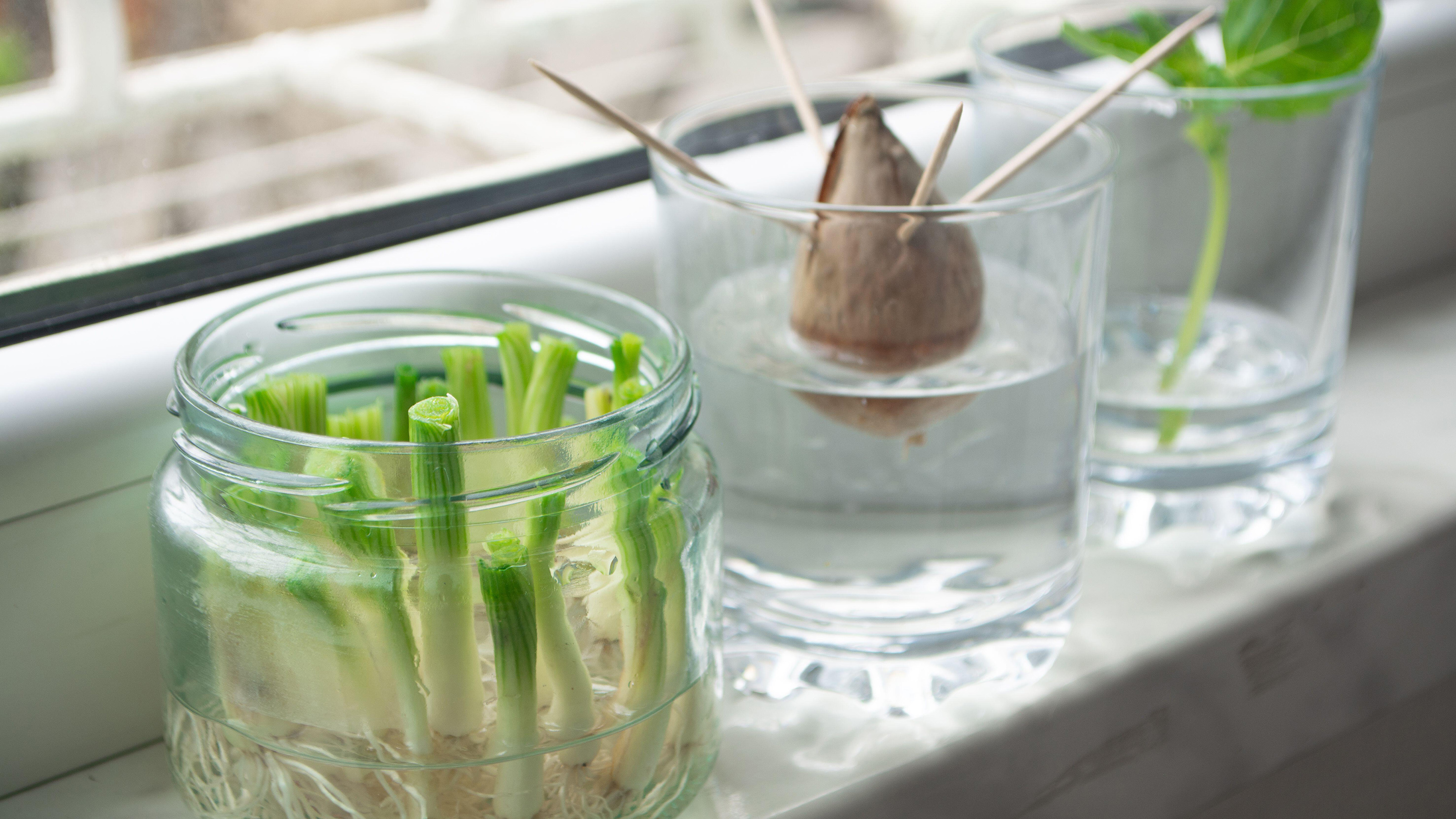

Did you know you can save money and cut back on waste by growing vegetables from scraps that you'd normally throw away? There’s a whole list of vegetables, herbs (and even a popular fruit) that will regrow from leftovers, saving your precious pennies and providing you with home-grown pesticide-free food.
You don’t need lots of horticultural expertise, it’s simple to do, and doesn’t require any sophisticated equipment – for many vegetables, all you’ll need to get started at home is a bowl or jar of water and a sunny kitchen windowsill.
You don’t even need a garden! Growing vegetables from scraps is a skill well worth learning. And in these financially uncertain times, it's a wonderfully cheap garden idea that can anyone can have a go at. But it’s also great fun to try with kids as a first gardening activity, plus, the result is free food! What more could you want?
Save money by growing vegetables from scraps
Using the scraps from your favorite store-bought veggies, you're not only saving on waste but you're saving money by growing free plants. There's no expensive kit required either. All you need is a vessel for water, and somewhere to plant your veggies on afterwards.
1. Celery
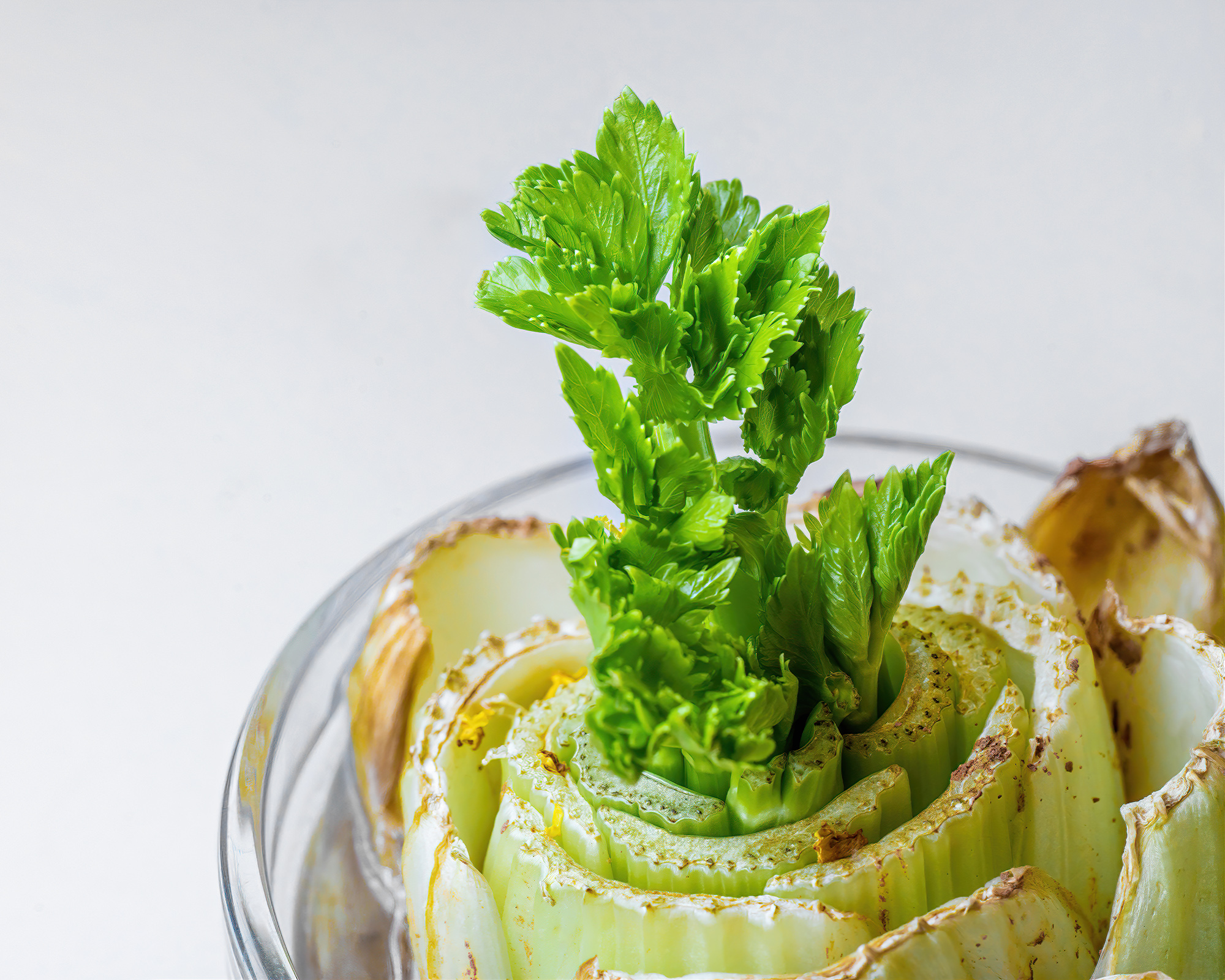
Growing celery from scraps is easier than from seeds, as even experienced gardeners find it tricky to germinate them. You can start off this free garden idea indoors with your celery stump in a bowl of water. It’ll grow fresh, spicy leaves in a few weeks.
Harvest these and add them to salads, or use them to make pesto. If you have space in your backyard, plant celery outside in early summer, and give it bags of moisture - you’ll be cropping the crunchy ribbed stems in a few short months.
Use them to add bite to winter soups and stews, or raw with summer party dips.
2. Lettuce
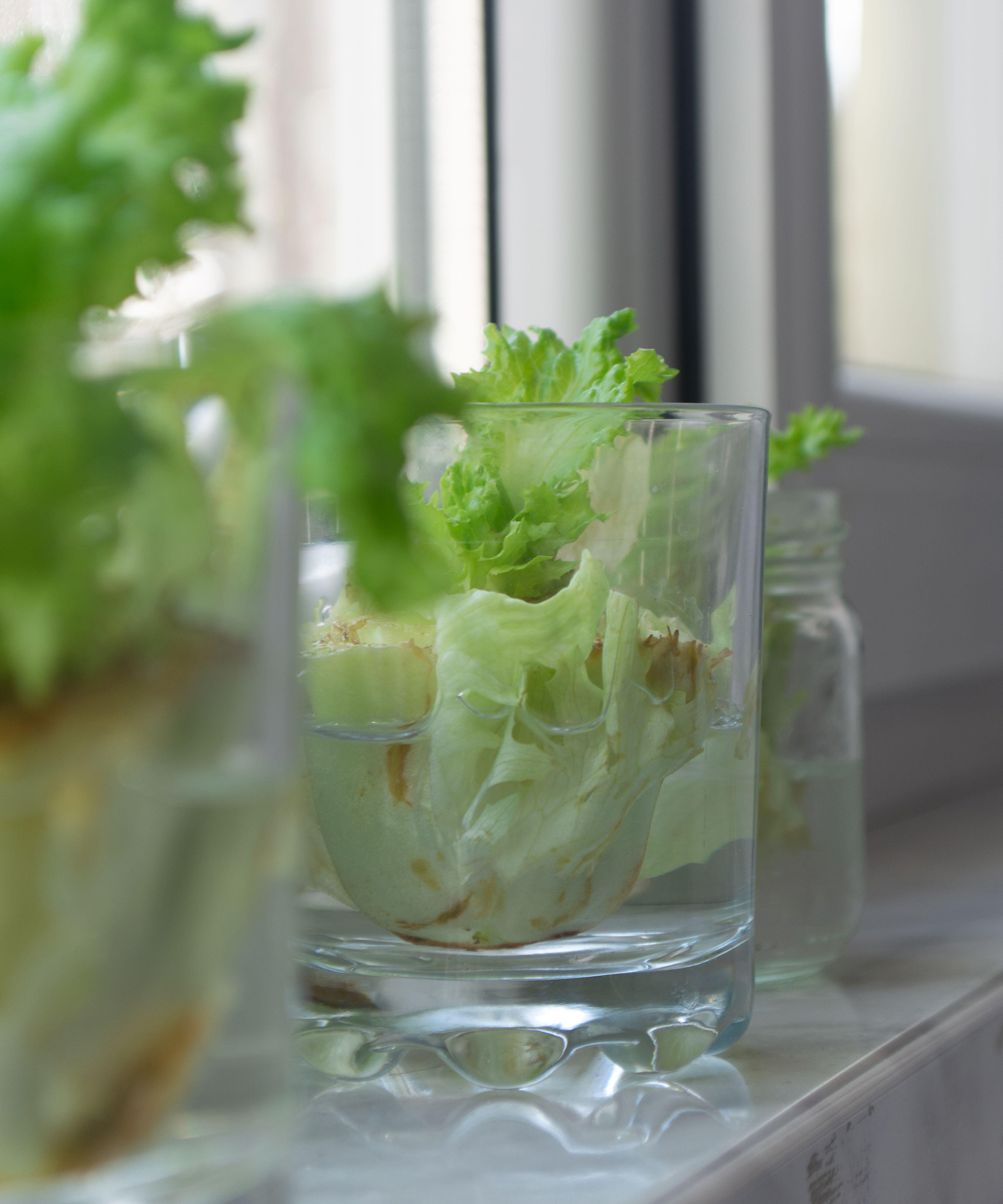
When you’ve used up all your juicy lettuce leaves and are left with an unpromising-looking brown stump, don’t throw it out! You can regrow fresh salad leaves in a couple of weeks on your windowsill.
It really is super-easy and needs no previous gardening experience. For this reason, and because it’s so speedy, it’s one of the best garden activities for kids, and one of the first to try if you’ve never tried growing vegetables from scraps until now.
And once you’ve used the newly grown leaves, pop the stump back in fresh water, and it will regrow all over again. Genius!
3. Scallions
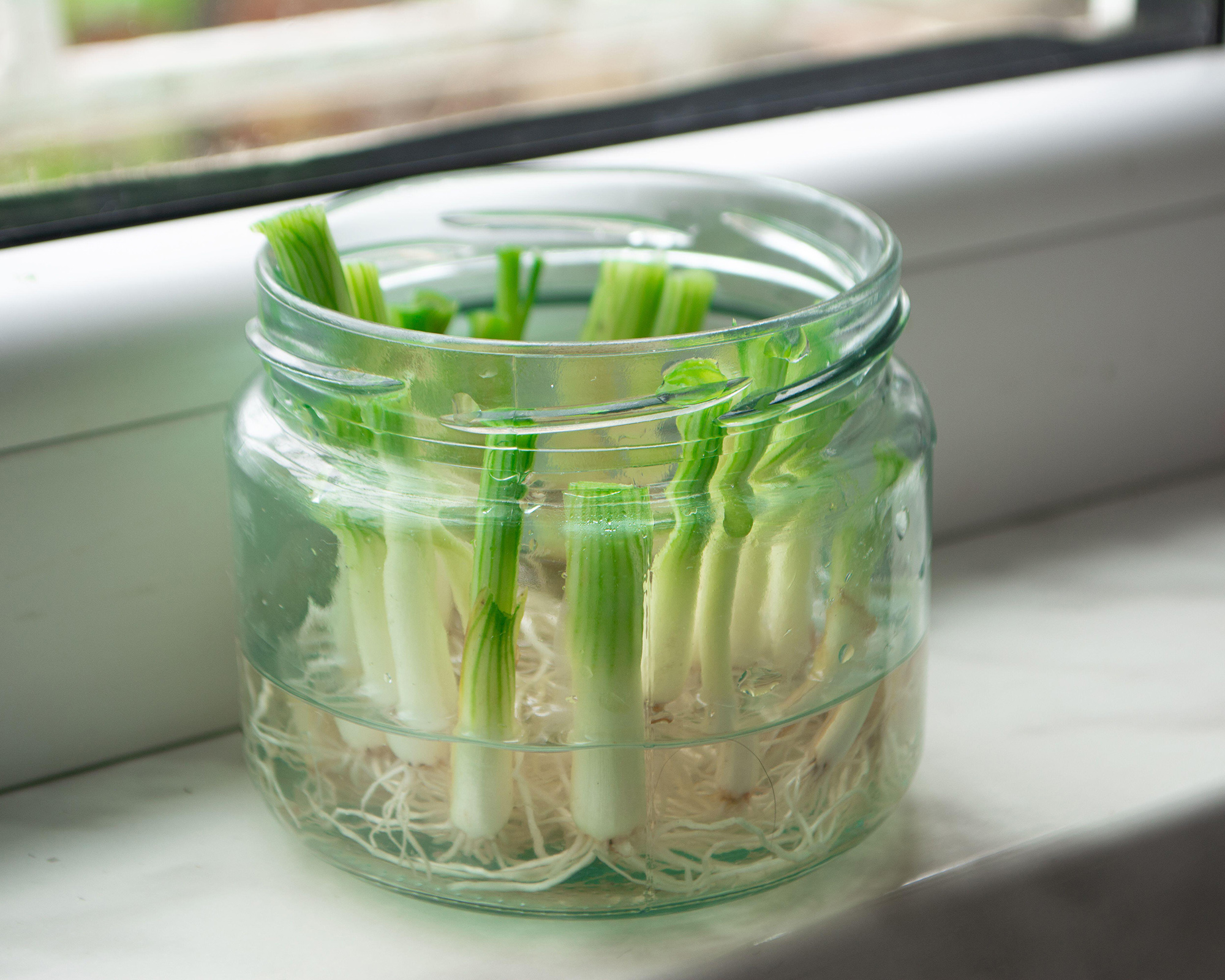
Scallions are yummy added to salads and sandwiches, and the good news is, they’ll produce shoots in water in no time. Just like lettuce, they’re so simple that they’re a great veggie to start off with and a perfect plant for beginners.
Grow them on your kitchen windowsill in a bowl, and in a couple of weeks you’ll be harvesting your own scallion shoots. Or you can plant the bottom bit with roots into soil and grow on to produce bulbs, which takes 3-4 weeks.
Or let your plants flower which will produce seeds to collect. It's an easy method for how to get free seeds, which you can then sow.
4. Carrots
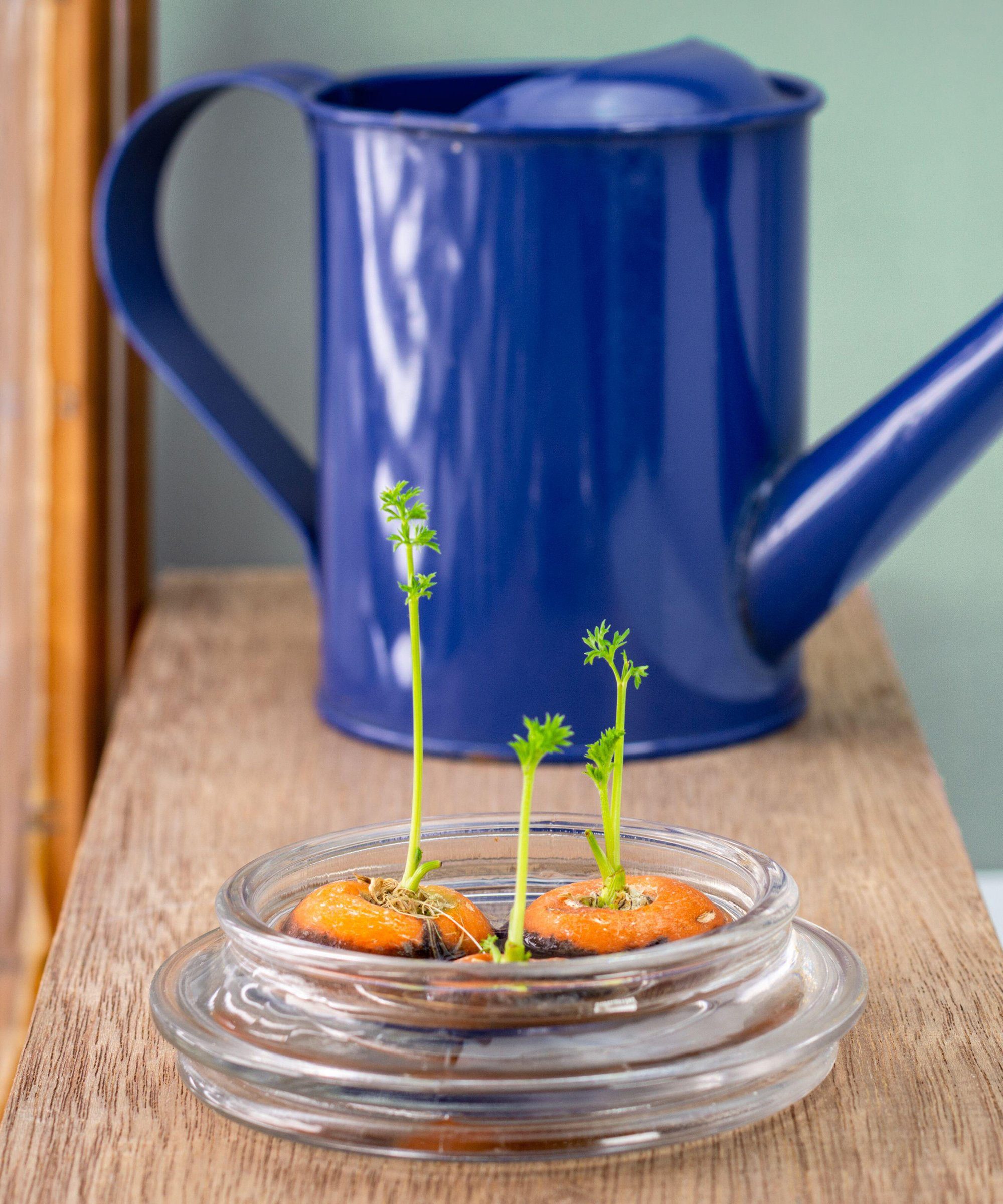
Carrots can regrow from scraps in water too – you just need the top end of the carrot root to start you off. First you’ll get the green asparagus-like foliage which you can chop up and sauté, or use to make carrot pesto.
Carrot top greens are hugely nutritious, being high in potassium, with a parsley-like flavor. If you’re keen to know how to grow carrots whole, transplant the tops out into the backyard once they’re shooting, and you’ll have fresh roots in 2-3 months.
Allow one to flower and you’ll get carrot seeds too.
5. Basil
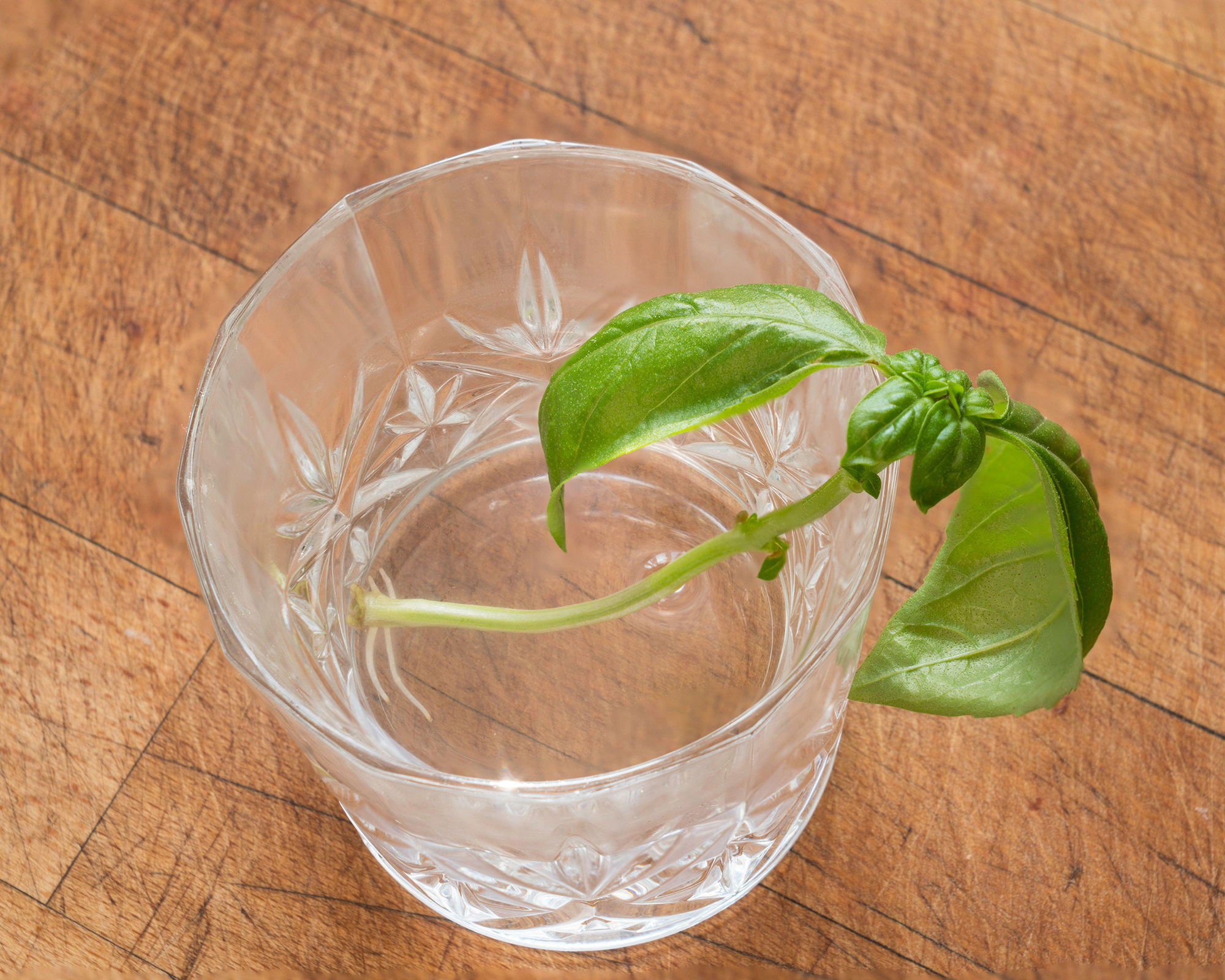
These extremely useful herbs that we use all the time in cooking can be easily started off from a leftover stem in a jar or bowl of water. This is great, as they’re difficult to keep fresh for long indoors and can be temperamental.
If you're learning how to grow basil using scraps, it’s best to start in spring or early summer. Keep them handy for culinary use on a sunny kitchen windowsill, indoors or outdoors as part of a vertical herb garden, and harvest regularly.
For the best flavor, don’t let them flower. Don’t pick more than a third of the plant at any one time, and they’ll keep producing for you.
6. Pineapple
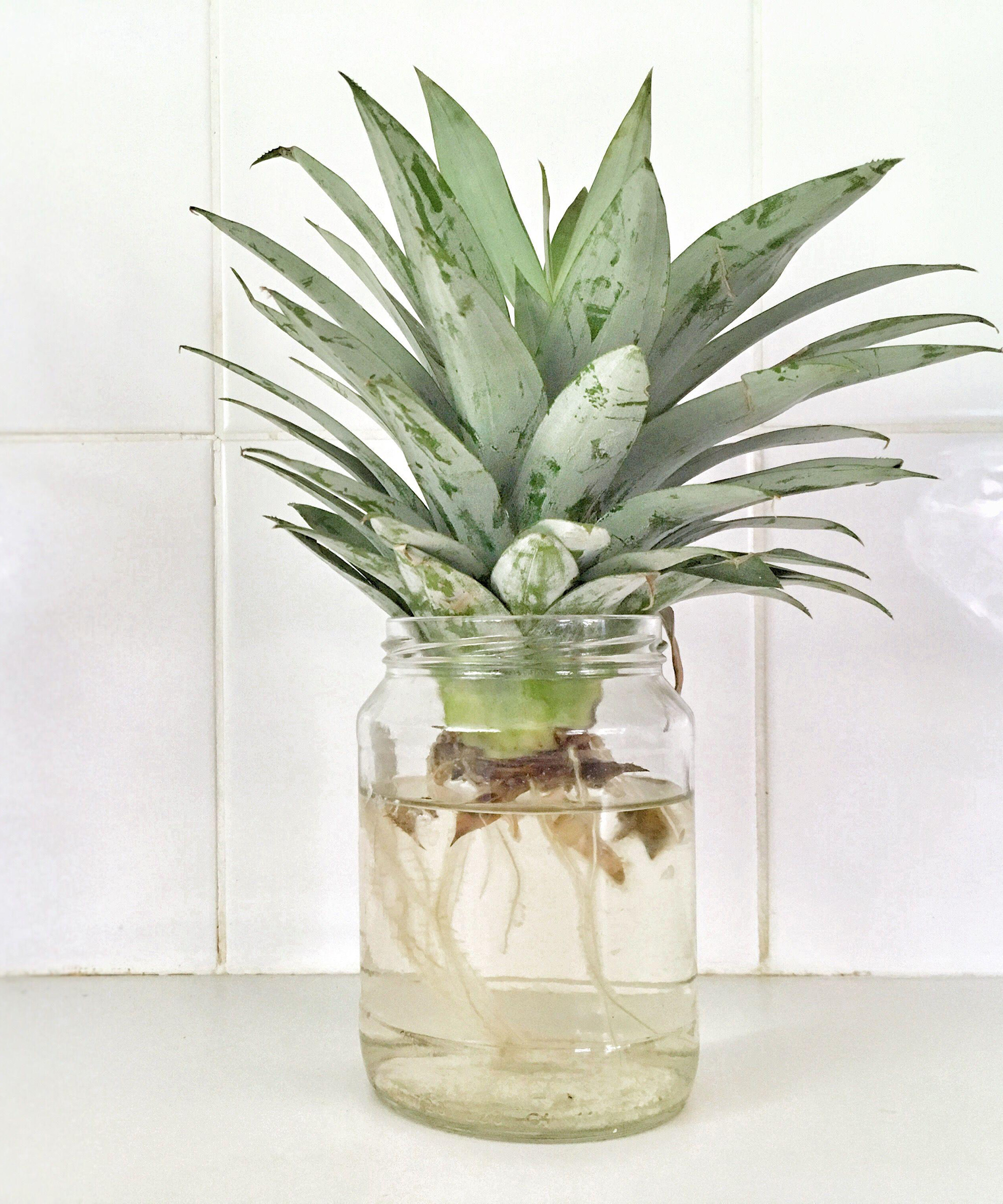
It’s perfectly possible to regrow a pineapple from a leftover pineapple top. You might have to wait a while, as they can take two to three years, but you’ll certainly impress the neighbors once they're ready.
Pineapple plants are bromeliads, and like all other bromeliads they flower once, produce one fruit and promptly die. But you can propagate new plants by digging up the small plants or ‘pups’ at the base, advises Gardeners’ World.
Pineapples need space – they have to reach 6ft (2m) to flower and require full sun, so you’re best growing them in something like a DIY greenhouse in cooler climates.
7. Garlic
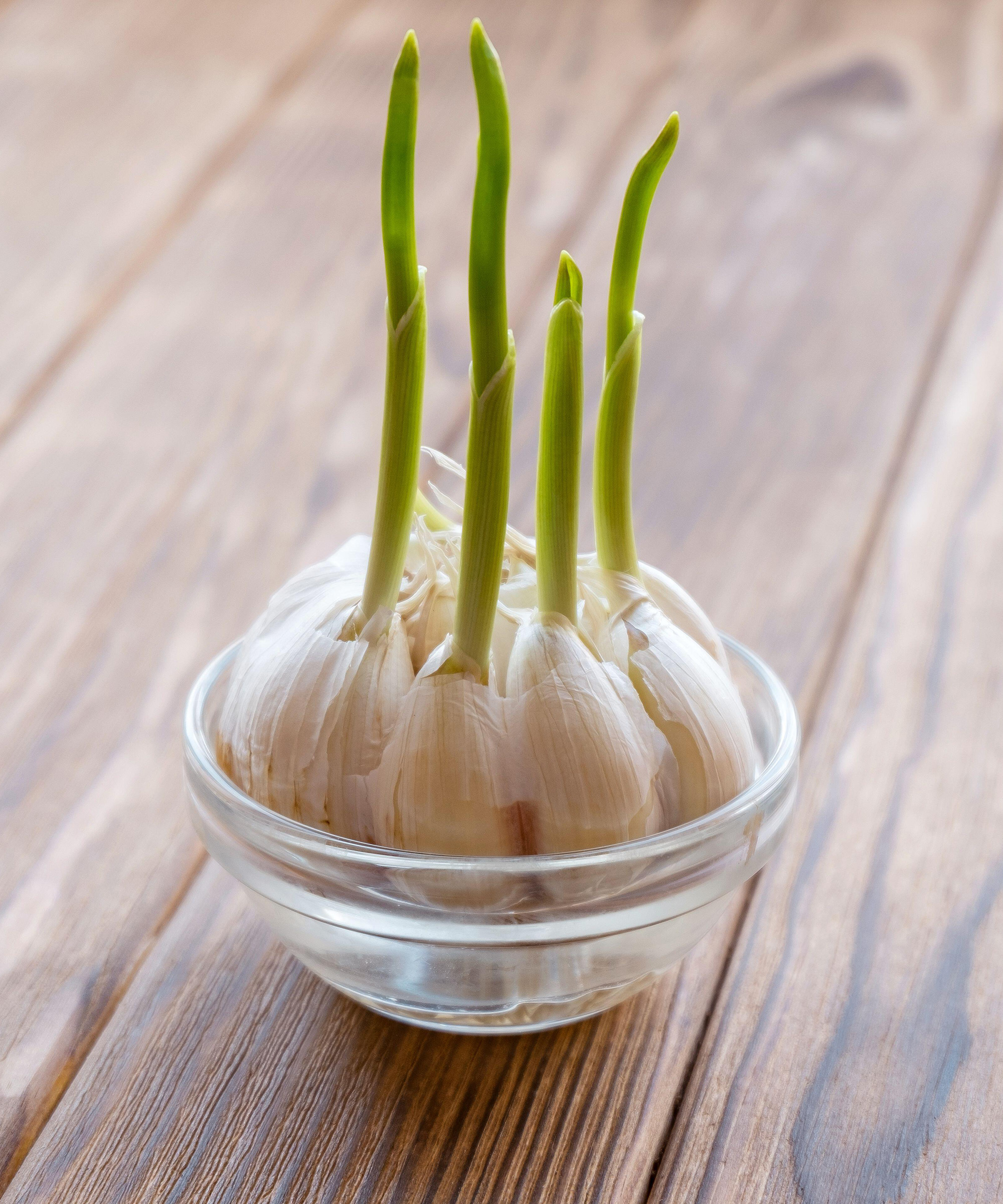
Learning how to grow garlic from leftovers at home takes almost no room, so is easy if you’ve no outside space. There are two methods to try – either put cloves in a jar with water, and harvest the shoots, or garlic greens, which have a milder flavor than the bulbs, and snip into salads and dips.
Or plant cloves outside as part of your budget backyard ideas, root-end down below the soil. Organic guru Bob Flowerdew recommends doing this in the fall, for bulbs around five months later.
Plant garlic near roses and fruit trees as a companion planting method, he says, as the smell deters pests, but keep it away from beans and peas.
8. Potatoes
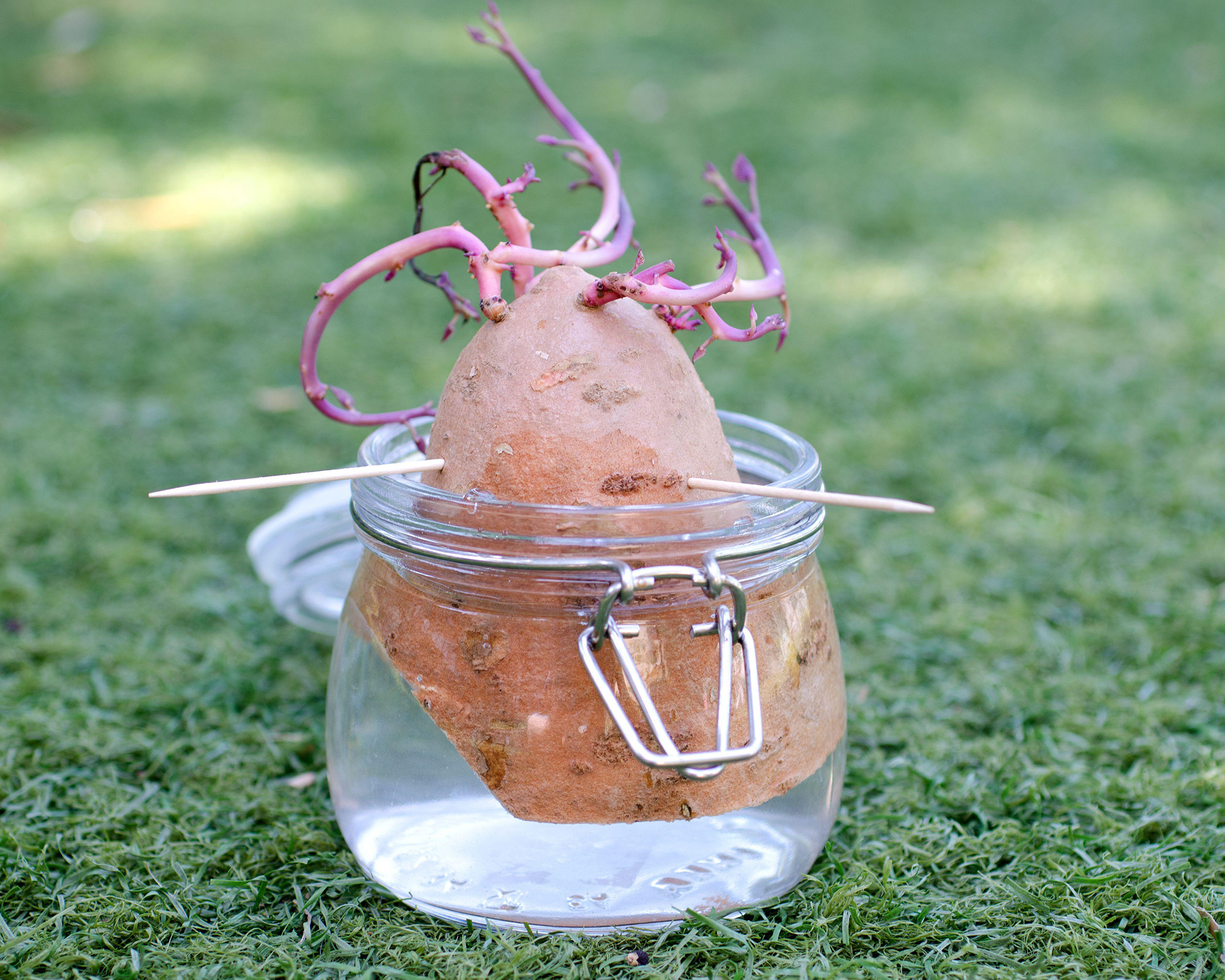
You can grow a whole container full of potatoes from a few leftover potato scraps with ‘eyes’ on them. Okay, it’s less sure than buying seed potatoes from garden centers, but it's free and perfect for a small vegetable garden.
If possible, choose organic varieties that are less likely to have been treated with growth-retardant chemicals to stop them shooting.
Grow potatoes from scraps by cutting it into pieces and start off in water. Once they shoot, plant outside in the ground or in a large bin in multipurpose compost, with the ‘eyes’ upwards. Any kind of potato can be used – you can grow sweet potatoes this way too.
9. Beets
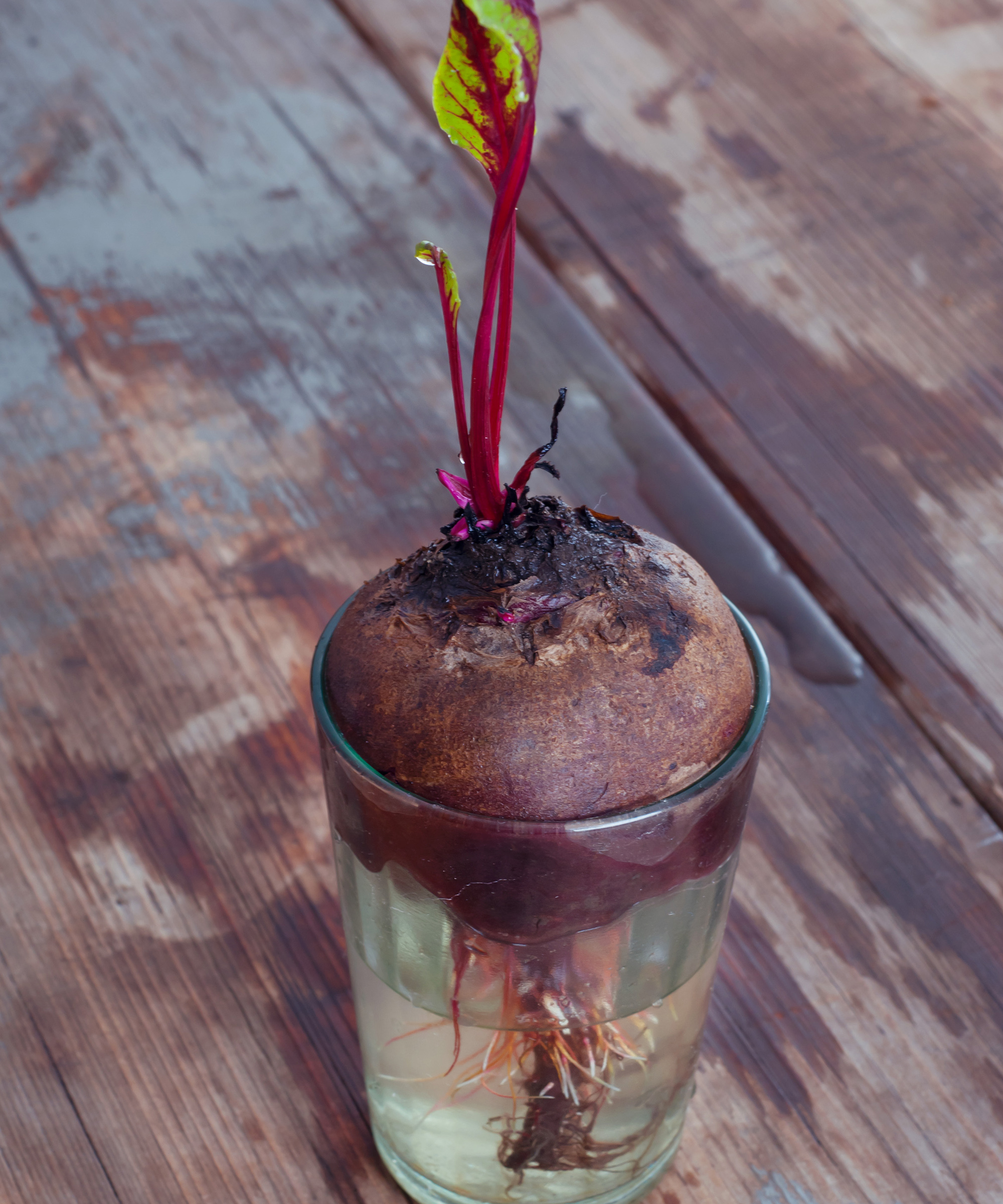
Beetroot is one of the easiest vegetable to grow, so why not try growing it from scraps too?
Beet leaves are delicious eaten fresh in salads or chopped into stews, stir-fries, and soups. Beetroot is another vegetable that regrows foliage easily in water. Use the top of the globe cut off with its leaves removed, and new ones will regrow.
If you can transplant them and grow beetroot outside in garden soil, they’ll produce leaves for longer. Some varieties of beets have particularly attractive colorful leaves, and they’re packed full of good things – they contain iron, potassium and magnesium as well as vitamin K.
If your leftover beetroot is healthy, you may even get a second harvest in your kitchen garden.
10. Watercress
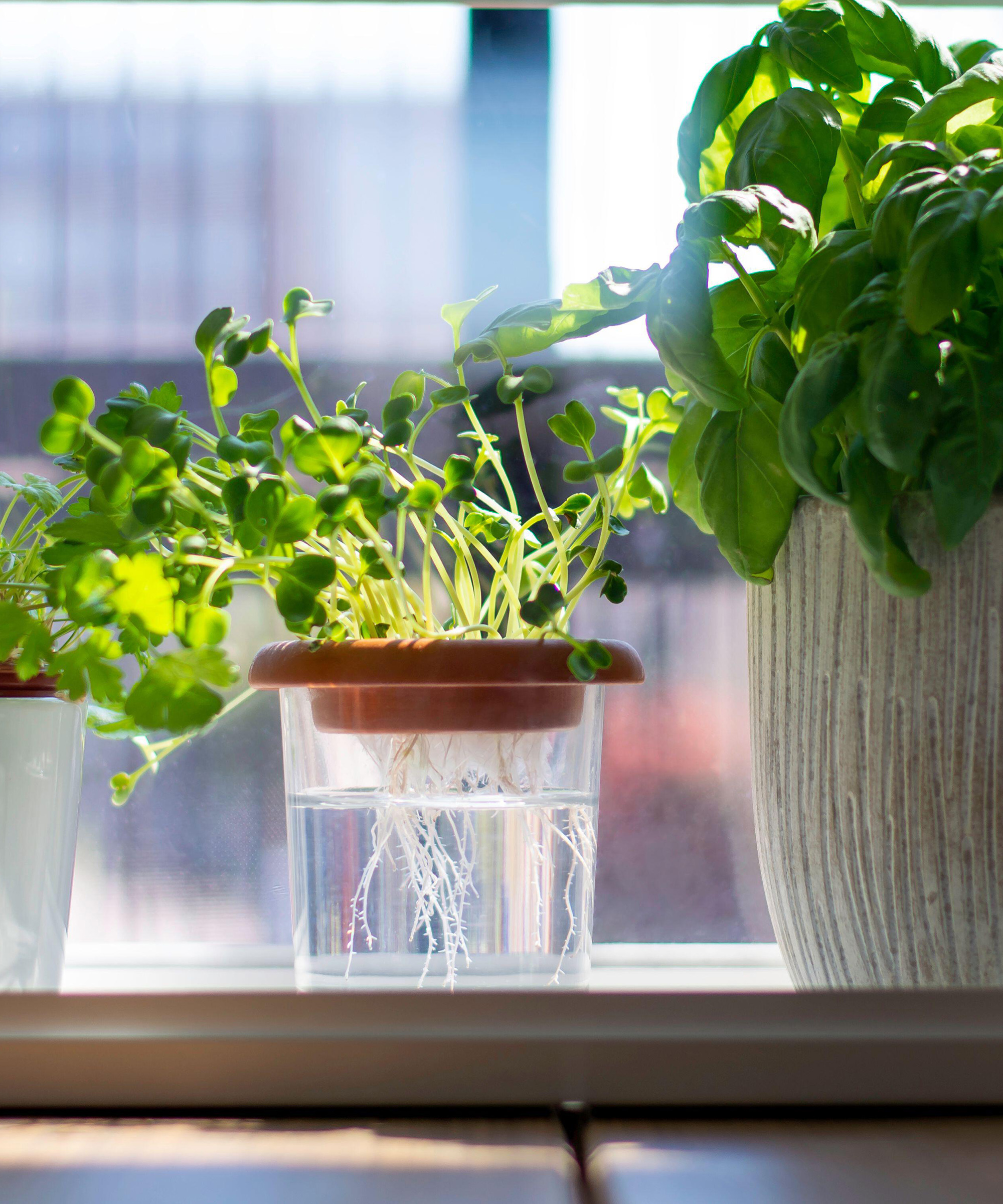
Watercress is easy to grow, happy in shade, and is packed with vitamins and minerals. You can easily grow your own supply all summer from leftover pieces of watercress, either as healthy microgreens on your kitchen windowsill, advises Alys Fowler, horticultural author, or outdoors in moist soil or in a pot as part of your container gardening ideas.
Start in spring, using leftover stems in water to produce roots. After that, pot up in moist compost and continue to grow on your windowsill, or transfer it to a large garden planter or moist soil in a shady spot outdoors, making sure it never dries out.
What vegetables regrow in water?
There are a long list of veggies you can regrow easily in water. The easiest are probably lettuce, bok choy, scallions or garlic, but you can try lemongrass, whole onions, leeks, celery, carrot greens and beet leaves too.
These are ideal for those without garden space. But for root vegetables, like potatoes, turnips and carrot roots, you really need to plant them in soil outside, in pots or raised garden beds.
Several of the best herbs to grow in your garden will also root in water – the easiest are mint and basil. But have a go too at rosemary, sage, coriander, oregano and thyme, which are a bit trickier and demand a bit more patience.
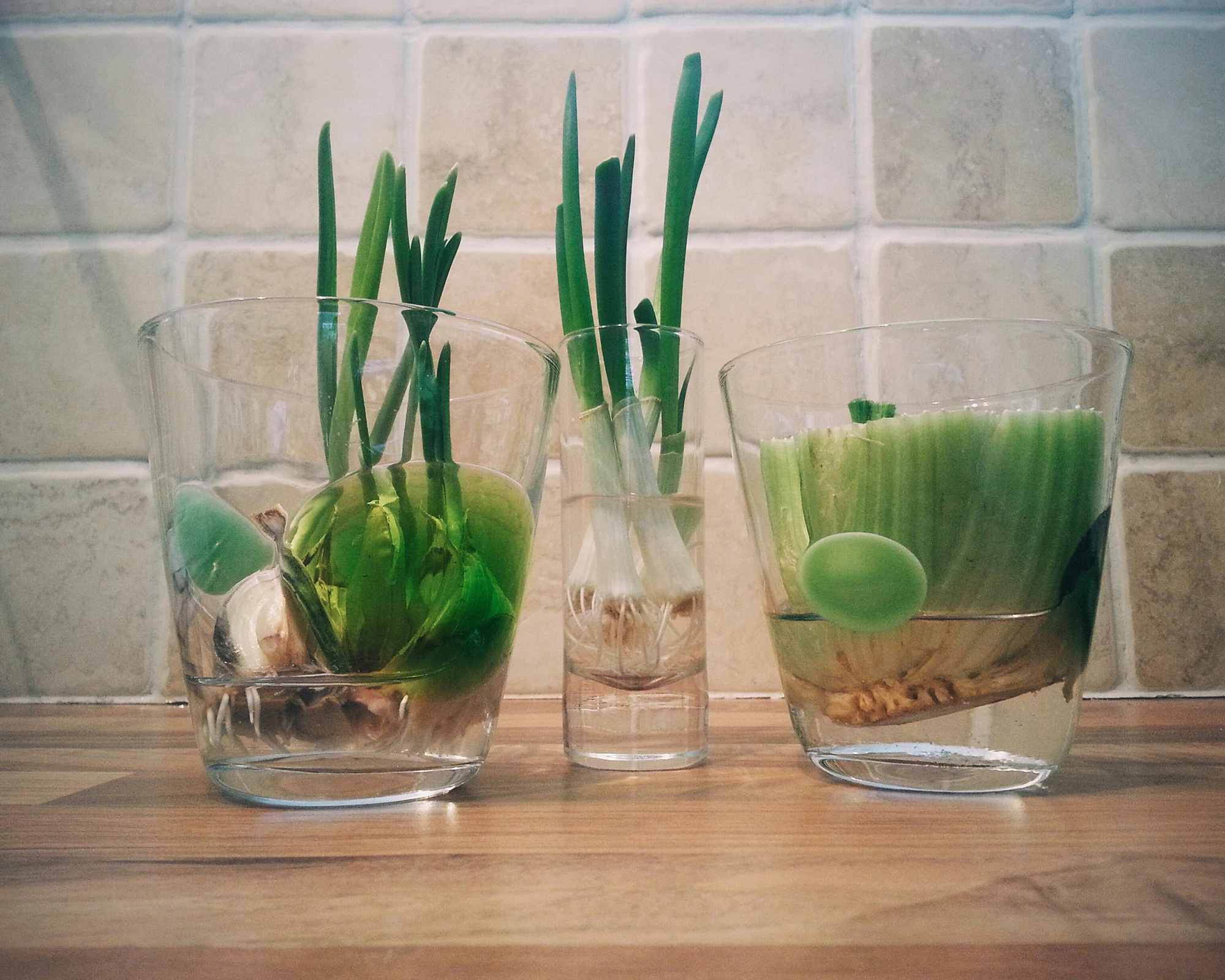
Why not start an indoor veg garden with lots of varieties of veg grown from scraps?
How do you regrow store bought vegetables?
If you're interested in learning how to grow vegetables from scraps using store bought veg, make sure you look for organic veg where possible when shopping. This is because they haven’t been treated with chemicals like growth retardant which can prevent them shooting. You can grow them either in water or soil.
Use the veg in the normal way, but keep the bits you’d normally throw out. This is usually the base or stump, where the growing plates are situated – these are the bits that will kickstart regrowth.
You can also save seeds leftover from store-bought veg – try tomatoes, squash, peppers, cucumbers – you’ll need to save them, keep them cool and dry, and sow them at the correct time. You can also regrow leftover tubers of ginger and horseradish for your own stocks.
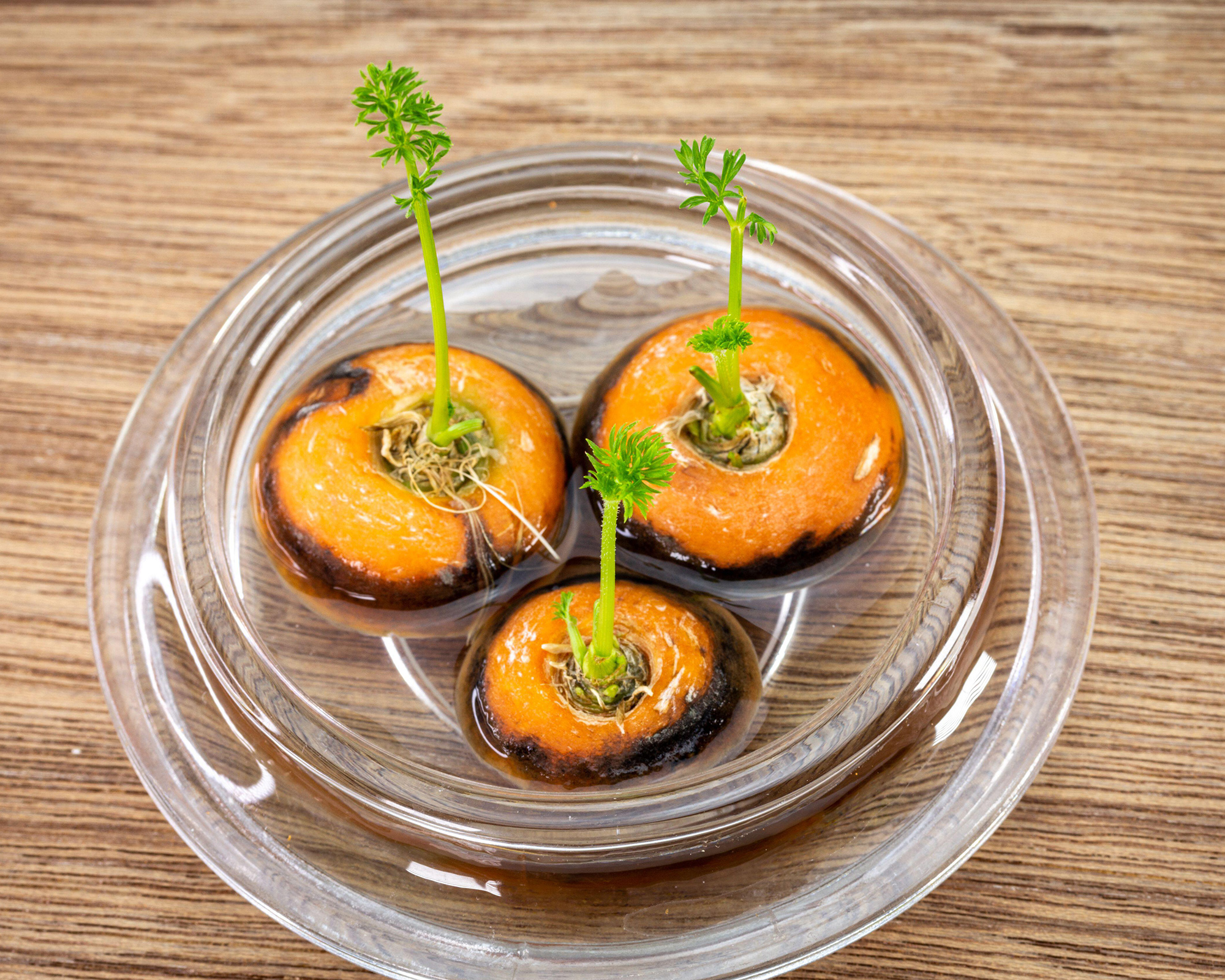
Carrot tops will need to be transplanted into soil for whole carrots
How do you grow vegetables from the vegetables you already have?
Have a look through your fridge and veg basket and look again at the leftover bits you were going to toss. For root crops, carrots and turnip, cut off the top part of the veg and the greenery sprouting from it, and start them off in water.
For scallions, bok choy, lettuce, celery, leeks, etc, you need the base part, usually a stump, which you start in water. And of course, you can save the seeds from peppers, tomatoes and squash as above, to re-sow.
If you find leftover bits of watercress or herbs, start them off as stem cuttings – you’ll soon become addicted to growing vegetables from scraps you were going to throw out!

Geraldine is a gardener and garden writer, who has worked for over 12 years in historic public gardens and private gardens around London. She has written articles for Easy Gardens, Which? Gardening and Women’s Weekly Gardening Special magazines and for gardeningetc.com. She also edited the book ‘Britain’s Favourite Plants’ for the RHS.
